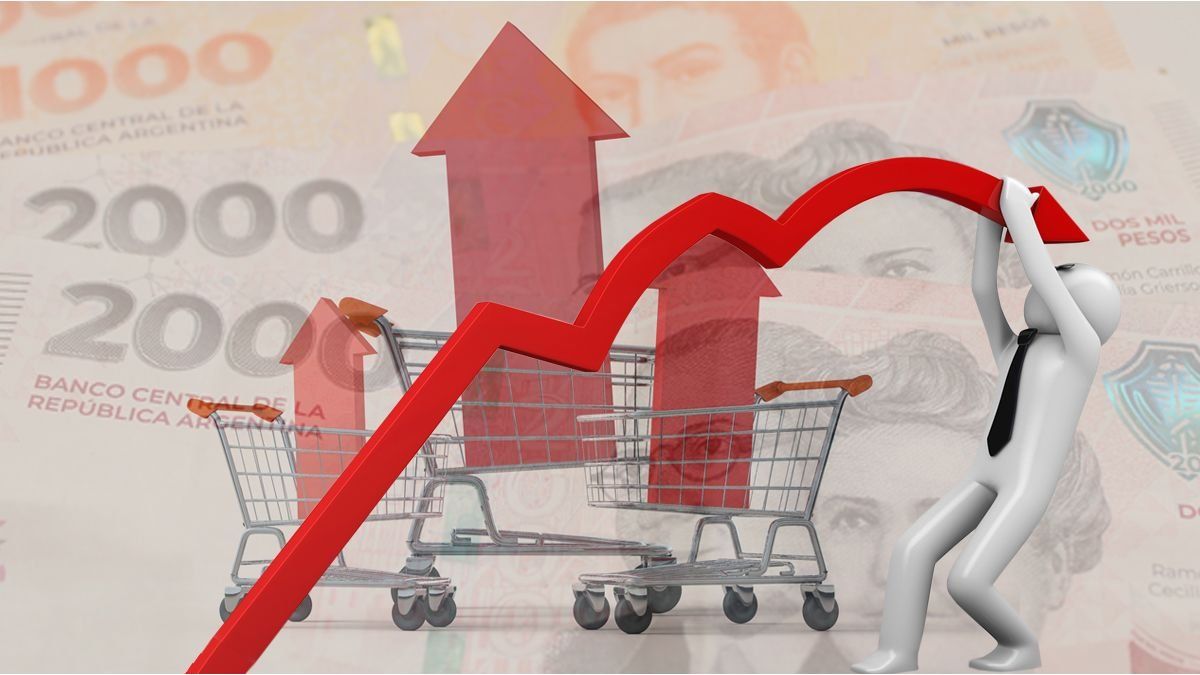Inflation corresponding to June could begin With number one. After the consumer price index (IPC) that threw April, less than expected after the flexibility of the stocks, economists project that the price variation could Continue your deceleration thanks to exchange and income factors.
The last data last month determined that, even with the elimination of exchange restrictions, inflation was 2.8%. In the accumulated it marked 11.6% and the year -on -year 47.3%.
The number reflects a relief for the Government, after the December data, close to 4% (3.7%). According to the vision of the president of Analytica, Ricardo Delgadothe decline in the field “Non -alcoholic food and drinks “ marks the course of the Price slowdown. “We started up 3%, we had 3.2% for May, we took it to 2.6% and on Friday we lower it to 2.1% Because we see the weekly monitoring, especially food and drinks, ”explains the economist.
In that sense, the consultant also adjusts the June inflation: “The first week already gives us 1.8%, with which there are real chances that, if this financial dollar environment and relatively favorable international conditions are held, The Government can have a high 1 probablybut a 1 at last, ”he anticipates thin.
Fernando Marullpartner in Fmyaagrees with the economist’s projections, since it also emphasizes that the First week of May inflation in food was 0%while the second directly detected 0.2%. “Today we project the May IPC between 2% and 2.2%but if the third week and fourth week it is still very stable, June will start with one, ”estimates the specialist.
Inflation: the exchange factor and income play in favor
For its part, the economist Federico Machadoof the Observatory Openit coincides with the inflationary deceleration that forested Marull and Delgado, but warns that it is a process given by the exchange and income anchor. “On the side of the exchange rate, Although the BCRA does not buy reservations, we observe that until the end of June it will dominate the flowfor export settlement, by entry of capital that seek to make ‘Carry Trade’ and for a relatively low tourism demand, ”he says.
In turn, with respect to salary and consumption, he warns that “the government strives to push the 1%salary guideline, so that the” Menger principle “continues, where the Mass consumption does not allow enabling price increases.
“In summary, in May and June the exchange and income factors will play strong in favor of disinflationdoes not seem unthinkable to break the 2%barrier, ”says Machado.
However, forward, with “The growing money supply ” And the exchange rate “receiving upward pressures”, the economist estimates that “a new inertial floor” will be found, for which it seems “unlikely“That this year’s inflation drilles the 26 points.
On the circulating of money in the economy, the Open expert describes that there is another factor that affects inflation, such as monetization: “In terms of remumination, the government has a money growth guideline of 4% monthly on average, which despite its speech of ‘zero emission’ and ‘monetary anchor’, seems relatively lax,” he points out in front of the consultation of this medium.
Increase in reservations and inflation
Regarding international reserves, June 13 will be a key date for the Government, when you should demonstrate to the International Monetary Fund that accumulated US $ 4,500 million of net reserves To unlock the second disbursement of the year, for US $ 2 billion.
What seems like a challenge for the market, for President Javier Milei is dismissed: “The accumulation of reserves sucks me an egg!, ”Said Milei.” Flexible exchange rate means that the reserves do not vary. (…) Debt payment with fiscal balance “he mentioned in a streaming talk.
Does the accumulation of dollars affect market support to the economic program? In this case, How could it affect the increase in reserves to inflation? To thin, accumulate reserves involves injecting weights into the market, which raises the price of the exchange rate and “complicates lower inflation.” “In the short term, the government wants to show that it finally reaches 1%. What remains is to give credibility to the exchange regime And so it will even end up breaking core inflation “(which was 3.2%), the economist replied.
“The first three months was the 4%’crawling’ regime, which obviously did not work because inflation accelerated, basically because reservations were lost. Now it does not seem to be the case. In April you had inflation below, even with a regime change and with agreement with the fund. We will see what happens in May, ”understands the president of Analytica.
On the other hand, the Argentine Grande Institute puts the focus on core inflation, highlighting that it fails to pierce the 3%floor: “The nucleus still does: It did the same as March and is above the CPI. Anyway, it is a good fact contemplating that it was a month with leaving the stocks, a short -term uncertainty about the value of the dollar and with bad expectations, ”he describes in his latest report.
As a context, IAG adds that Core inflation is used as a proxy of future inflation Because it contemplates the evolution of prices that are not regulated and that have no seasonality, such as fruits and vegetables, which rise or fall according to the season.
Source: Ambito




